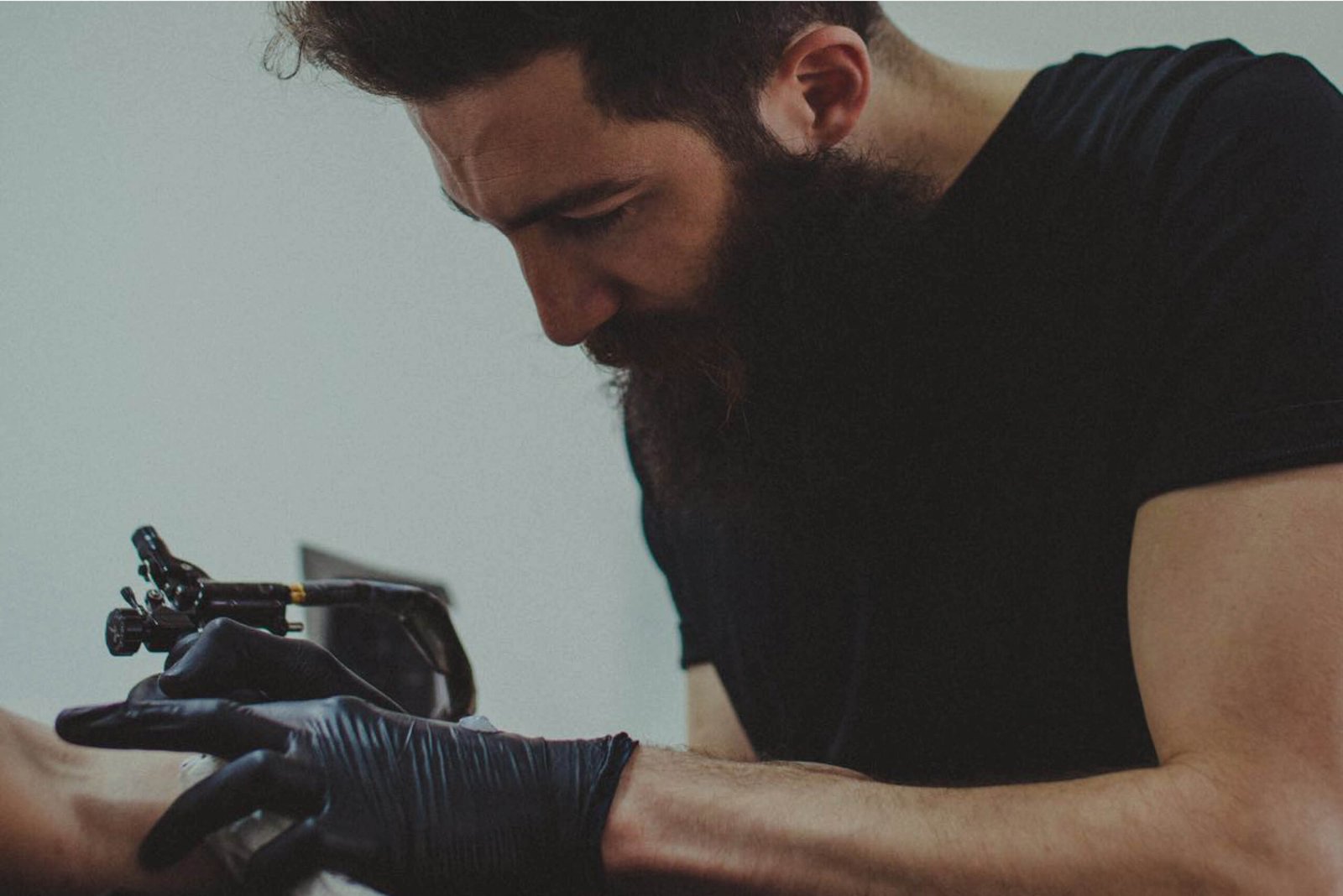Interview and Introduction Kara Gonzales
Images Mo Ganji
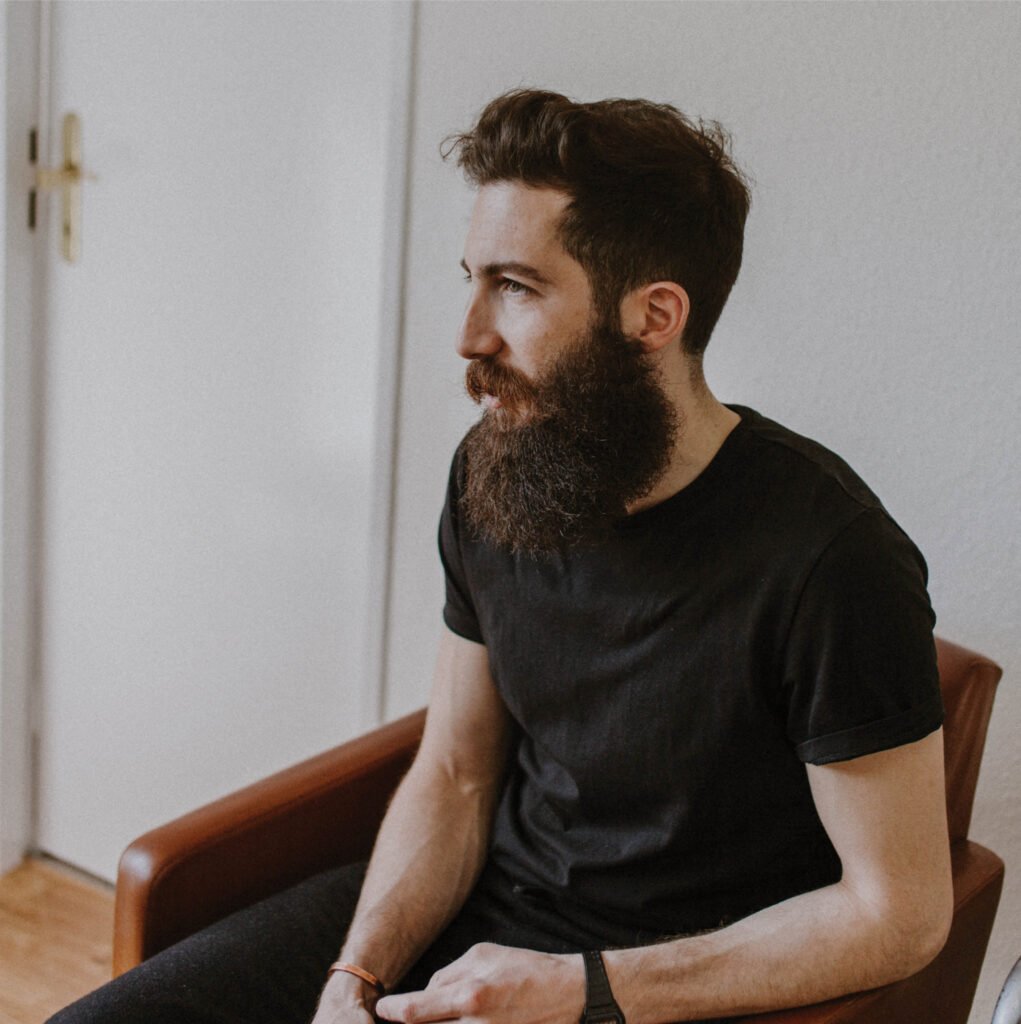

I read somewhere that it takes a person 10 years to master something.
This implies that in our lifetime, it is possible for us to master at least three to five things, whether it be in the academic field, through practical experience, or in the arts.
On my 30th birthday, I decided that I wanted to master something other than my profession of retail design. I decided to learn how to tattoo.
I had long been on the receiving end of a tattoo gun but have always wanted to be on the other end of it. I always loved telling stories, and I was excited at the prospect of doing so in an altogether new medium, in this age-old craft of permanently inking symbols onto the skin. Three years and many stories later, I am continuously learning and very much enjoying the art of tattooing. I still have a long way to go and still quite far from mastering this craft, but I was very fortunate to have learned from an extremely talented mentor, Katz Lorenzana, and to have technology expose me to many great tattoo artists who inspire me to become better and to keep learning this amazing craft.
One of the artists who I actually have on my tattoo bucket list to meet and get inked by is Mo Ganji, an Iranian-born, Berlin-based artist known for his single-line tattoo designs. In this interview, Mo shares his inspirations, processes, and thoughts on his chosen craft of tattooing.
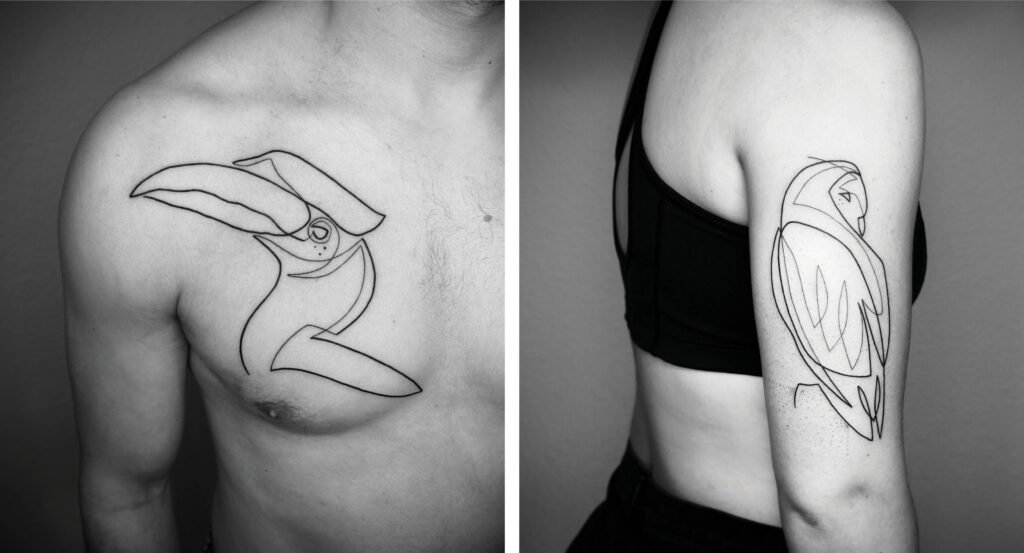

What got you into tattooing? What sparked your interest in developing this craft?
About nine years ago, I was looking into tattoos because I wanted to get one myself. I was fascinated by this form of art. I have been painting and drawing my entire life, but tattooing—drawing with a needle that leaves a permanent mark—was completely different [to me]. Besides that, my life at the time was screaming for change and a new beginning from working in the retail industry for almost a decade.
I was talking so much about tattoos that my friends bought me a tattoo machine on my 31st birthday. That kind of pushed me to just start doing this. It was the beginning of an unbelievable journey.
Today, eight years later, it’s like the biggest gift from the universe because I feel that everything is finally in place. Ironically, I still don’t have a tattoo myself, but I do enjoy the time and the freedom that this profession provides me.
Please tell us more about your single-line tattoo style. How did you develop this, and what got you into doing just this particular style of tattoos?
We live in a world that is suffering from the constant need for more. Developing this style was more or less a part of a bigger process that involves the development of my own character and my own beliefs. One of my deepest beliefs is that simple does it. I don’t need much for a fulfilling life.
The single-line style is a perfect reflection of that and of the way I live. It’s clear and easy to understand regardless of age, gender or heritage. Simplicity can also be so complex that it blows your mind, but it’s definitely not for everyone.
Your work is very minimalist, yet it also has a really strong, bold look and approach. Apart from the single-line style, the themes mostly center on animals, human faces, and other organic forms. Is there a reason for sticking mainly to these themes? Where else do you draw inspiration from?
Nature is the most fascinating thing and is the best artist that I know. Nothing is as beautiful as nature. I find all my inspiration there, and you can clearly see this in my work.
The humans from a thousand years ago probably felt the same way when they first started to paint on cave walls. When you look at my images, you can see animals, humans, nature. One and the same line, just in different shapes.
I do believe that everything in this world is energy – one and the same energy. Some people call it prana or chi, some say nature, life, or God. Anyways, I do believe that the only thing that is separating us from each other and the world and energy around us are our egos.
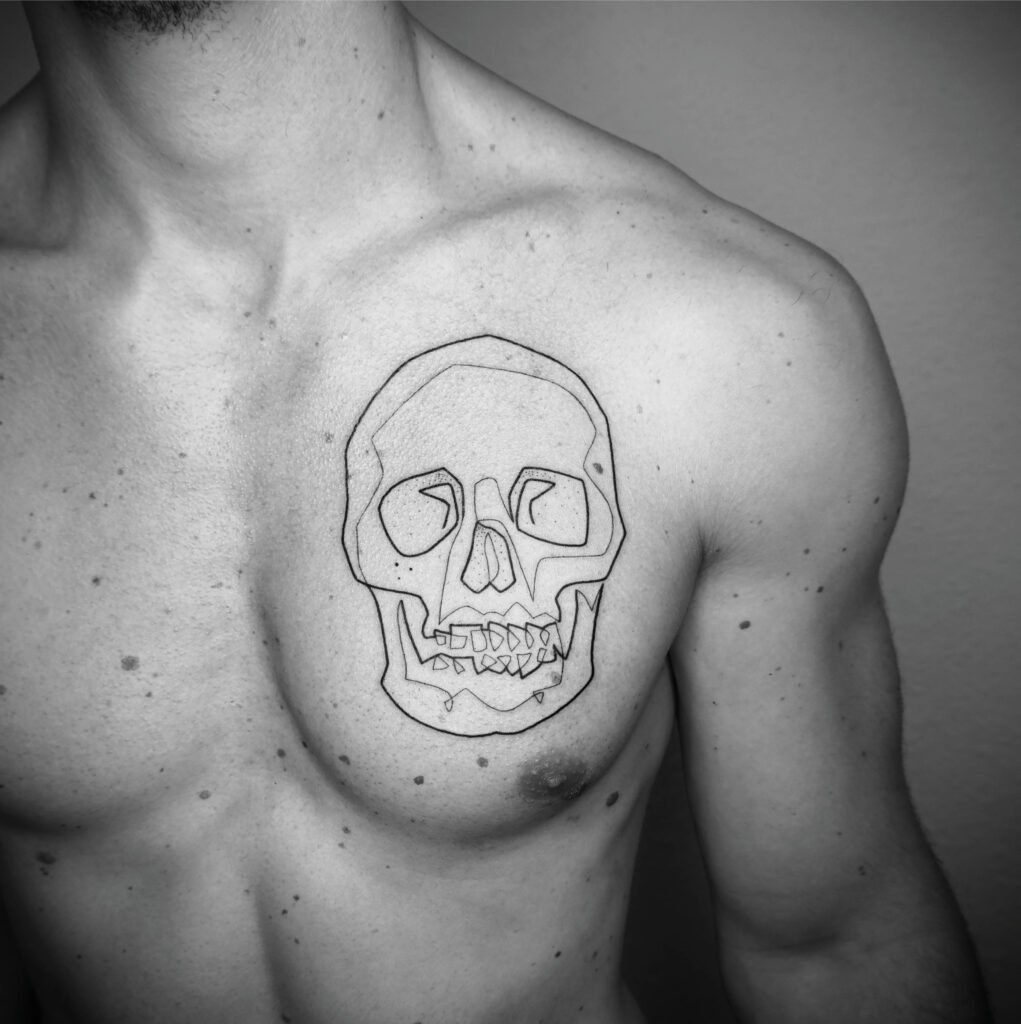

“Simple does it. I don’t need much for a fulfilling life. The single-line style is a perfect reflection of that and of the way I live. Simplicity can also be so complex that it blows your mind.”
The art and practice of tattooing have been around for centuries. As a tattoo artist myself, it has been amazing to see how the art has evolved and how new technologies and developments have impacted the way tattooing is done, and even how it is viewed in general. It has gone from a traditional and sacred practice to something taboo in popular culture to now an art form that is more widely accepted and available to almost everyone. How do you think these modern changes have impacted the art and practice of tattooing? Has it affected you personally? How so?
To me, the act of tattooing somehow is still very sacred, and I feel like I have the responsibility and privilege to make sure that my clients get to experience a more spiritual setting, even now that you can get tattoos on the beach.
You are changing someone visually for the rest of his or her life. I feel like this requires a peaceful setting where everybody can relax completely and enjoy the entire process without any disruption.
Some of the studios I see on the Internet today remind me of nightclubs. Many people, flashlights, laughter, loud music. It’s not an environment that I would feel comfortable working in or getting tattooed in myself. But this is only my personal view on this—as an insecure, introverted person. Whatever floats your boat.
Technology has made so many parts of the entire tattooing process easier – from drawing up the designs digitally all the way to the more advanced tattoo machines that are in the market today.
What are your thoughts on these developments? Have they helped you in your own process, or are you more inclined towards the more manual, traditional approach?
If I have to choose between pen and paper, a typewriter, and a computer, I would always go for the fastest and most accurate option to write something up. The most important thing is that I know how to write and read 🙂
Technology nowadays is great because it makes the entire tattooing process a lot easier, and it saves you lots of time, from the first sketch to the aftercare of the tattoo. Regardless of the technological aspect, if you are a good craftsman, you can still tattoo someone with a fishbone as long as you understand the whole process.
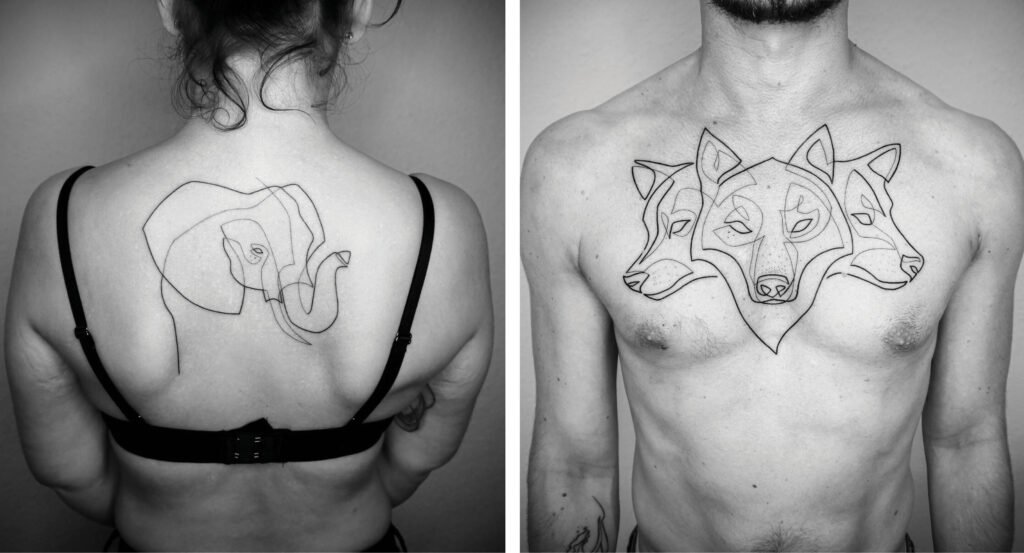



What is your process in designing a tattoo for a client?
Every client gets to explain his or her story and requirements for the tattoo, plus two reference pictures. The rest is up to me. I do ask for 100% freedom and explain beforehand that I’m not changing any of my finished designs.
It means that if you don’t like the design I’m sending you a week before the appointment, I give the appointment to someone on the waiting list. It is totally fine with me if people don’t like the stuff that I come up with. All I’m asking for is that they respect my view as an artist and the fact that a finished painting should not be overpainted once finished.
Your work is celebrated and recognized the world over. And yet, you provide free designs for everyone to use through your website and Instagram. Why do you do this? Why is this important for you?
How do you measure success nowadays? In my case, as a visual artist, it is through the people who appreciate my work—liking it, sharing it. I would not have been “successful“ at all without the massive support that all these people show me every day.
I feel like giving something back to everyone, especially to the ones who can’t afford to travel all the way to Germany [for a tattoo]. This is the least that I can do to show my appreciation for their support. Grow and give, regardless of what you do. It is somehow a form of healing.
What is one thing you would like people to know or understand more about your craft? Why?
That there is something magical about the whole process of tattooing. It’s something that is hard to explain because it’s something you have to experience to understand.
The best part about my craft is definitely the people.
It is an absolute privilege to get to know so many different individuals from all over the world. For that reason alone, I consider myself one of the richest persons I know.
Do you have a piece of advice for those who are also taking up or learning about the craft of tattooing?
This craft, like any other art form, is very individualistic. I can give you a brush, a canvas, and some paint, and show you exactly what to do but like painting, tattooing is something that you have to feel as you are doing it. It is a very personal journey. Enjoy every second of it. •
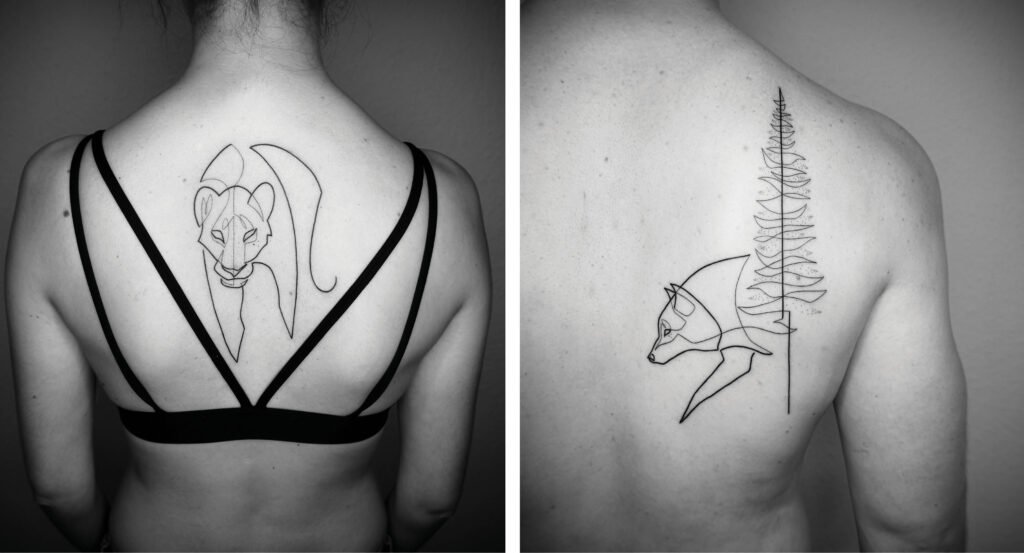

Mo Ganji’s one-liners await on Instagram @moganji and moganji.com
Kara Gonzales has been advocating mental health awareness ever since she was diagnosed with clinical depression and anxiety in 2016. She has been quite successful in managing her condition with the combination of medication, art, yoga, tattooing and occasionally writing for Kanto. Follow her tattoo journey (or get one from her able hands!) at @kara.inks
